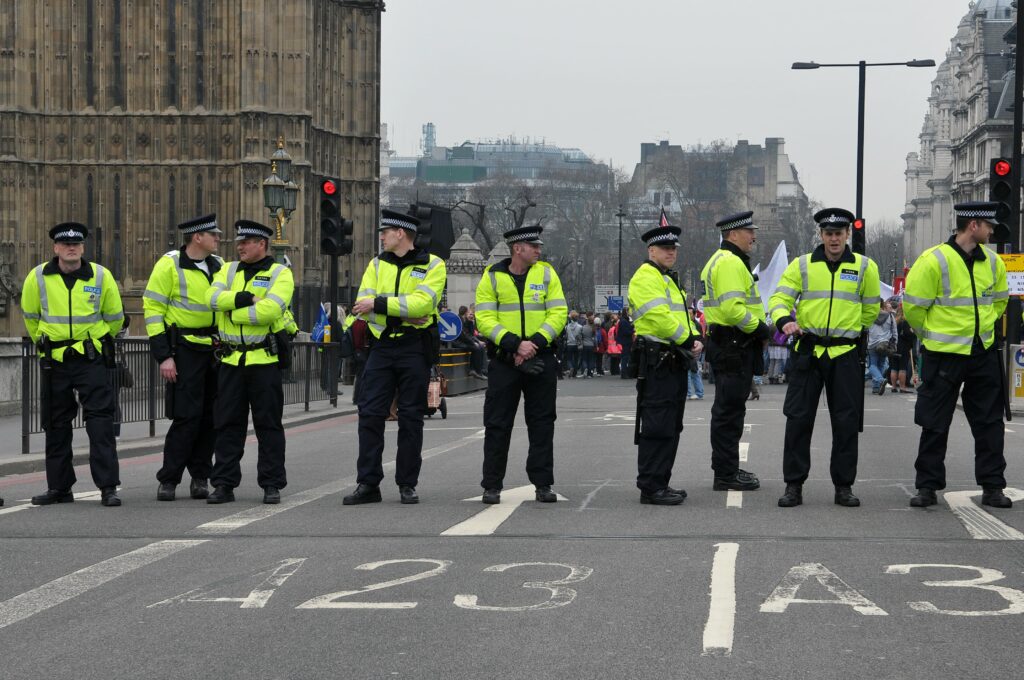Our Account Manager Katie Chapman shares her thoughts after joining the insightful webinar about “The Cost of the Riots” hosted by ACTM.
In recent weeks, the UK has experienced significant unrest following the tragic murder of three children in Southport, a tragedy further inflamed by widespread disinformation. These events have sparked riots across various towns and cities, wreaking havoc on businesses and local communities. High streets, already grappling with broader economic issues, have faced additional pressure as a result of the disturbances.
The Devastating Impact on Businesses
According to Martin McTague, Chairman of the Federation of Small Businesses (FSB), the riots have had a “devastating” effect on local economies. Many high street businesses, struggling due to pre-existing financial strains, now face even greater challenges. With the damage caused by the unrest, some businesses may find it difficult to recover fully, placing long-term sustainability at risk.
Further compounding the situation, several countries—including Nigeria, Malaysia, Kenya, Sweden, Australia, and Indonesia—have issued travel warnings, advising their citizens against visiting the UK. This has led to a potential decline in tourism, adding another blow to the nation’s fragile economy.
Footfall and Retail Performance: A Snapshot
The impact of the riots can be seen clearly in footfall data from Week 32 (4th–10th August 2024). High streets, retail parks, and shopping centres all experienced varying degrees of disruption:
- High Streets: Footfall plummeted by 4.5%, reflecting a sharp decline in consumer confidence and activity in these areas, which were most directly affected by the riots.
- Retail Parks: These areas performed slightly better, with a marginal increase in footfall of 0.7%. Their locations, typically outside of high-traffic city centres, may have shielded them somewhat from the worst of the unrest.
- Shopping Centres: A drop of 2.9% in footfall highlights consumer hesitation to visit large indoor spaces, especially during periods of heightened uncertainty.
Year-on-Year Performance
Looking at year-on-year trends, the numbers paint a grim picture for high streets, with a 4.7% decrease, continuing an already declining trend. Retail parks, on the other hand, showed a 4.2% growth, underscoring their relative resilience during times of crisis. Shopping centres, however, saw a 3.4% year-on-year decrease, a reflection of consumers’ reluctance to gather in enclosed spaces amid social unrest.
Signs of Recovery: Week 33 Data
As conditions began to stabilise in Week 33, some recovery was evident across different retail spaces:
- High Streets: Footfall recovered by 2.0%, signaling a gradual return of consumer confidence as the unrest subsided.
- Retail Parks: These areas, which fared better during the riots, saw a slight decline in recovery, with a 1.3% decrease.
- Shopping Centres: Footfall increased by 1.2%, but the recovery was slow, with ongoing caution from shoppers evident.
- These figures highlight the relative stability of retail parks compared to the volatility of high streets and shopping centres. Open-air retail spaces with convenient access appear to be favoured by consumers over central, high-traffic areas during periods of unrest.
Regional Impact: A Tale of Three Regions
The regions hardest hit by the riots saw significant footfall declines in Week 32:
- East Midlands: -8.3%
- North & Yorkshire: -9.7%
- West Midlands: -13.1%
These areas, which bore the brunt of the social unrest, have faced severe disruption to local commerce. In Week 33, these regions experienced some recovery:
- East Midlands: +2.6%
- North & Yorkshire: +4.0%
- West Midlands: +4.5%
While these gains are promising, they do not completely offset the damage done in Week 32, suggesting that the long-term effects of the riots may linger. The riots have left a mark on consumer behaviour and business confidence, especially in these regions where the unrest was most acute.
The Road to Recovery
As UK high streets continue to deal with a range of challenges—from riot-related disruption to broader economic instability—there is no doubt that the path to recovery will be long and uncertain. Retail parks may have shown greater resilience, but high streets and shopping centres, particularly in the hardest-hit regions, face a slower journey towards regaining their pre-riot stability.
Moreover, the international travel warnings issued by various countries could further damage the UK’s economic recovery efforts, particularly by reducing tourism and harming the nation’s global reputation.
In conclusion, while there are signs of recovery, the impact of the riots on UK businesses, especially those on the high street, will be felt for some time to come. The volatility of consumer behaviour, combined with lingering economic challenges, means that retailers must brace themselves for a potentially difficult road ahead.

